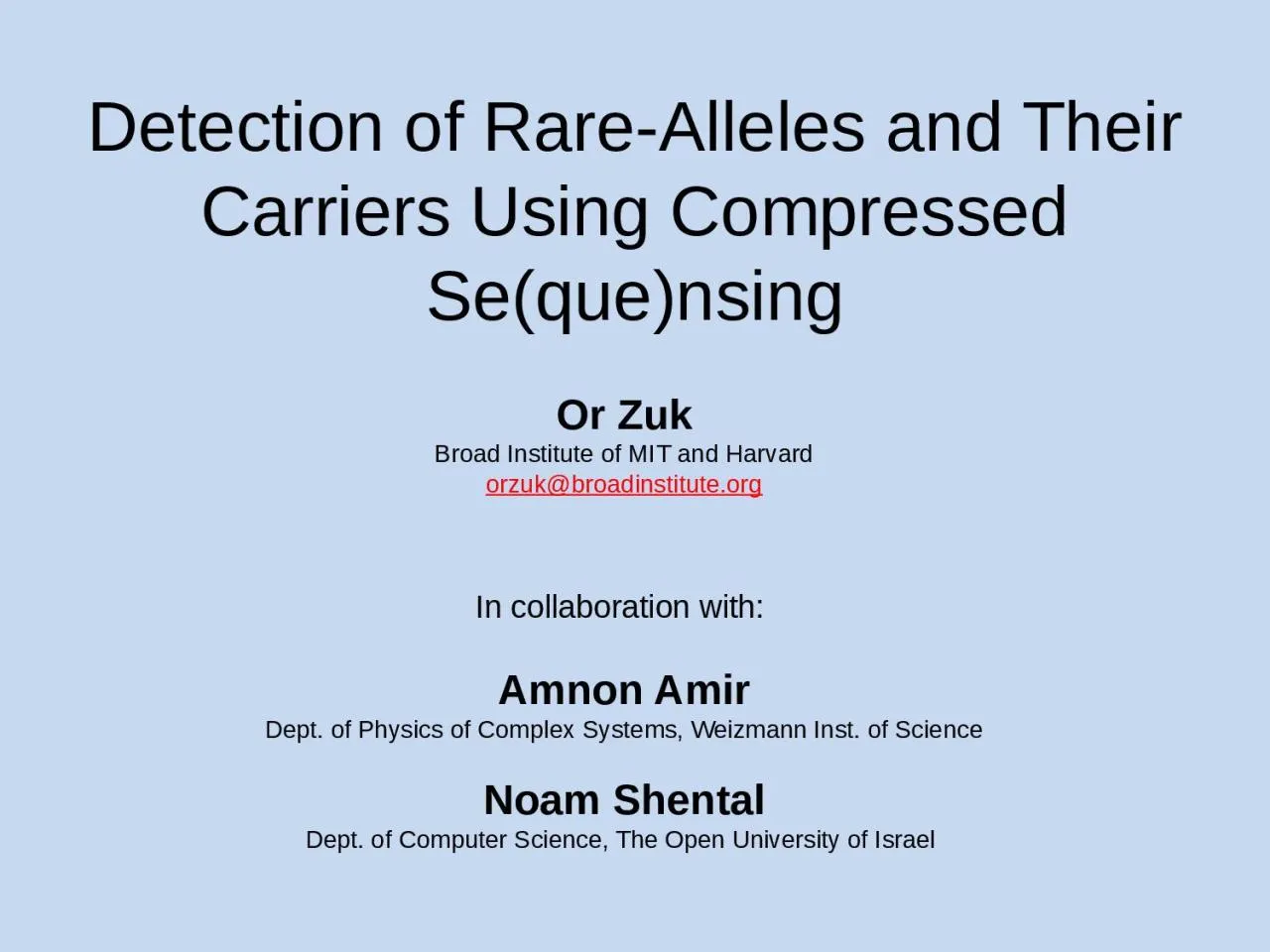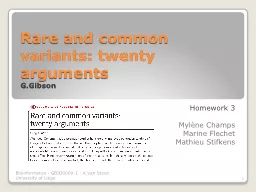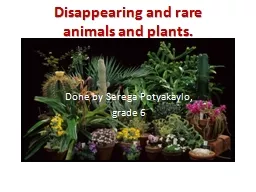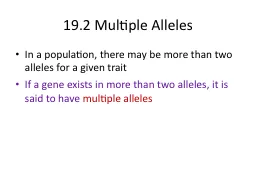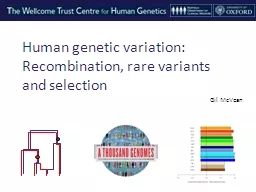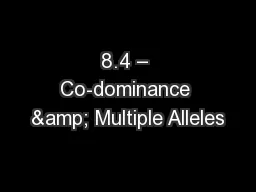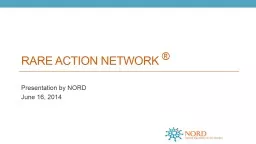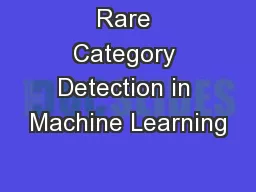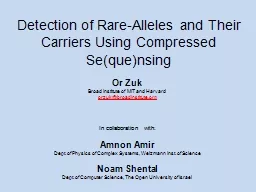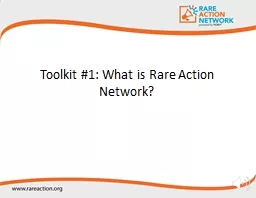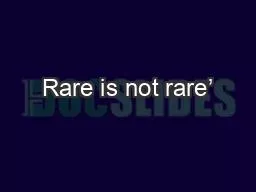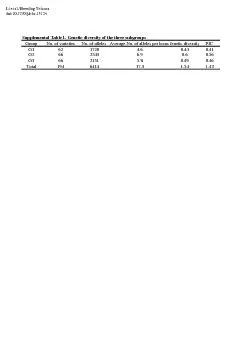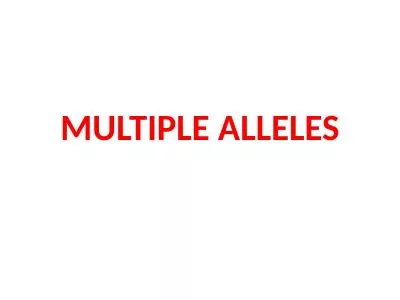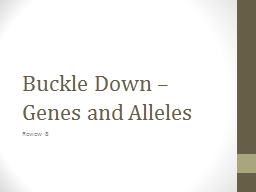PPT-Detection of Rare-Alleles
Author : patricia | Published Date : 2022-06-01
and Their Carriers Using Compressed Se que nsing Or Zuk Broad Institute of MIT and Harvard orzukbroadinstituteorg In collaboration with Amnon Amir Dept of
Presentation Embed Code
Download Presentation
Download Presentation The PPT/PDF document "Detection of Rare-Alleles" is the property of its rightful owner. Permission is granted to download and print the materials on this website for personal, non-commercial use only, and to display it on your personal computer provided you do not modify the materials and that you retain all copyright notices contained in the materials. By downloading content from our website, you accept the terms of this agreement.
Detection of Rare-Alleles: Transcript
Download Rules Of Document
"Detection of Rare-Alleles"The content belongs to its owner. You may download and print it for personal use, without modification, and keep all copyright notices. By downloading, you agree to these terms.
Related Documents

